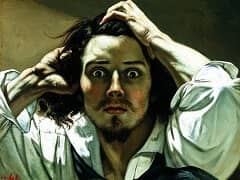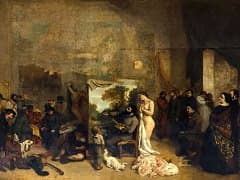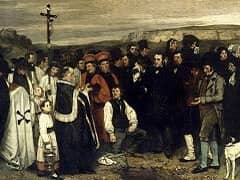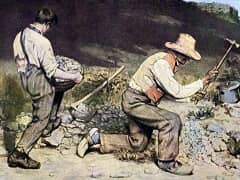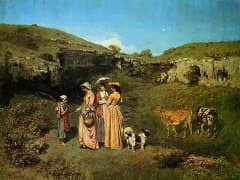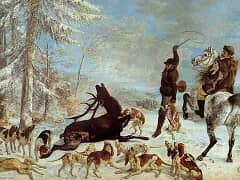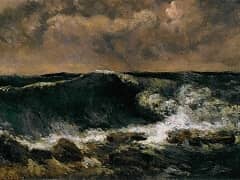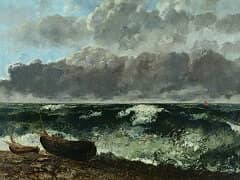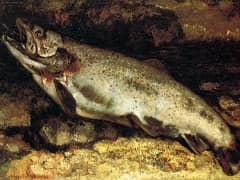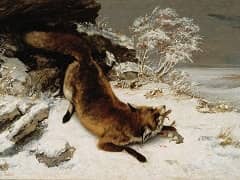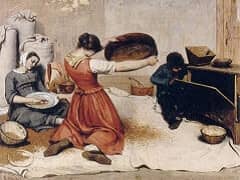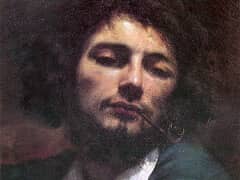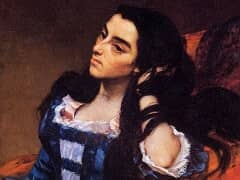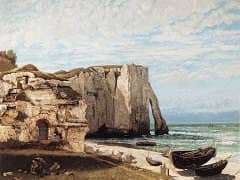The Peasants of Flagey Returning from the Fair by Gustave Courbet
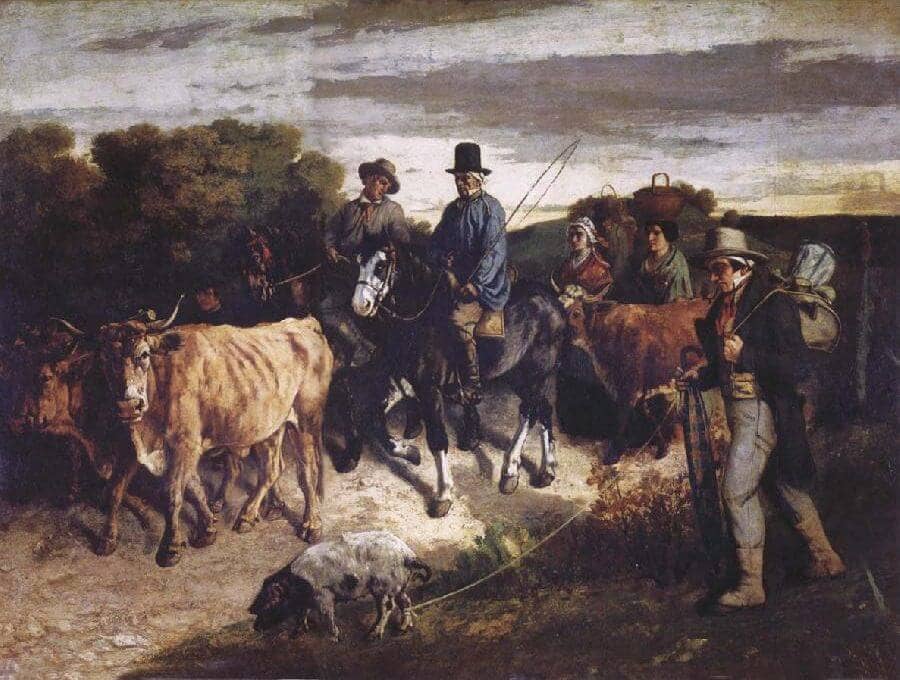
Along with A Burial at Ornans and The Stonebreakers, this was one of the three large and ambitious paintings of local life that stirred up so much critical furor at the Salon of 1850 - 51. The Burial drew most of the hostile fire, but the other two came in for their share. One critic wrote that The Peasants of Flagey was a picture that would go a long way toward curing Parisians of their pastoral fantasies, and make them cherish the asphalt and macadam of their urban boulevards. A favorite distinction among some of the critics who prided themselves on their advanced taste, such as the poet Theophile Gautier, was the one made between "le peuple" (good) and "la canaille" (bad: low life, riffraff, etc.) "Le peuple" were to be seen in the deserving and pitiable victims in a painting like Antigna's The Fire; Courbet's straightforward depiction of country people going about their business with their beasts was a representation of "canaille." What was troubling to the critics was not the representation of peasants as such, for there was already a lively tradition of well-composed imagery depicting young and attractive people working in the fields or celebrating the harvest, which fed into the urban pastoral fantasy; however, a work such as The Peasants of Flagey did not.
The figures here are the real farmers of the Doubs, owners of land, able to buy and sell livestock at the fair, but also able to live and work among their animals on an intimate basis that appeared ridiculous to Parisians. Such apparently lowly figures as a man carrying his goods on his back and walking a sow on a string and a woman bearing a basket on her head are presented with the scale and dignity that asserted their intrinsic significance. Also aggravating to the art-critical eye was the stiffness and seeming rigidity of the figures; only the horseman on the left turns his body and head, while the others are firmly vertical. This perceived deficiency (always an occasion for caricaturists to portray Courbet's figures as wooden toys) arises from the painter's conscious awareness of the qualities of traditional folk imagery, a hitherto ignored aspect of art that was beginning to be looked at with a new seriousness. He sensed that the directness of this imagery, the naive verticality of its figuration, had the power to counteract the sinuous ease of academic composition; and he could see that its character was closer in feeling to the actual conditions of rural life and work than were the graceful groupings by more conventional painters of peasant themes. Also at variance with these more pastoral works is the imposing presence of the farm animals: the great oxen, one of whom gazes out at the viewer in a searching way, and the lovingly painted sow, in the center foreground of the painting. The fact that Courbet changed the composition of the painting between its first showing in 1850 - 51 and its next in 1855 is revealed by a caricature which shows that the woman with the basket on her head was originally situated on the right side of the painting rather than toward the middle where she now appears, making a female pair to echo the pair of male riders. The vegetation and the distant couple cover the traces of the original figure, but where the paint lightens in the sky, the ghost of the original basket appears.

